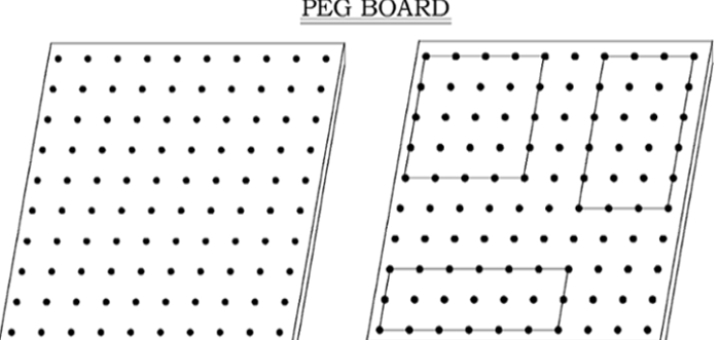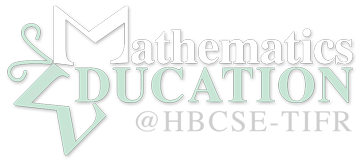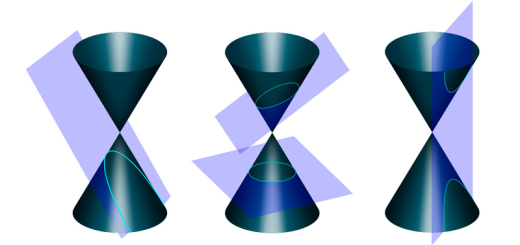Area and Perimeter

Material Required: Square “10 x 10” board of acrylic /plywood/ hardboard /chopped sole rubber, match sticks or short nails, string.
Many high school students find it difficult to master the concept of perimeter even though it is a simple concept. Further, its relation to area, which is the other measure associated with a bounded plane figure, is not clear. Some students even have difficulty with the concept of area. This activity clarifies the notion of perimeter and helps students discover its distances from the concept of area.
Drill holes on the square board at 1 inch intervals forming a square grid. The holes need to be just large enough to easily fit pegs which are about 2 mm in diameter. If the board is made of transparent acrylic sheet, it can also be used on the Over-head projector (OHP). Another advantage with an acrylic sheet is that, it can be placed on tip of a graph paper, which can be used to estimate areas. (Materials such as thermocol, or chappal sole rubber can also be used if they are available easily.) Break the match sticks in half and scrape off the phosphorous for using them as pegs on the board. Alternatively short nails with small heads can be used. In all about a dozen pegs may be required.
The following activities can be performed with the pegboard:
- Take a length of string about a foot long and knot its two ends together to form a loop. Give the loop to students along with four pegs. What are the different kinds of figures which they can make? Ask them to name the figures. Ask them what remains the same as these figures change. Introduce the concept of perimeter as the total length of the boundary.
- Take a total string length of 20 inches which is knotted into a loop and four pegs. Ask the children to make rectangles of different sizes. Which rectangle has the largest area?
- With the same loop of string, ask the students to form figures with 3 pegs, with 5 pegs, 6 pegs and so on. Can they estimate the area? Which figure has the largest area?
- Ask students to construct figures with a given area and measure the perimeters. Which figure has the largest perimeter?



